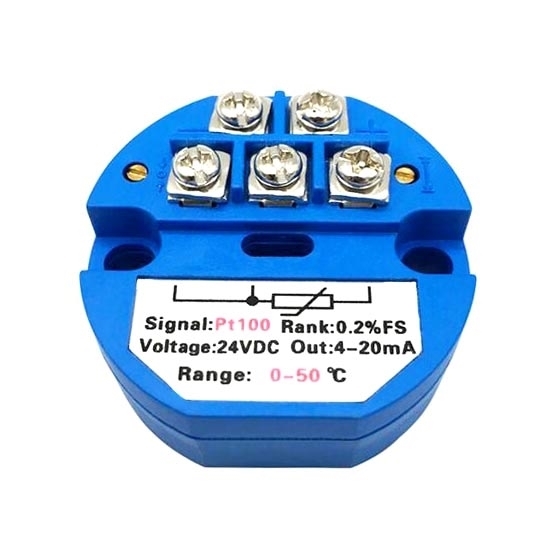
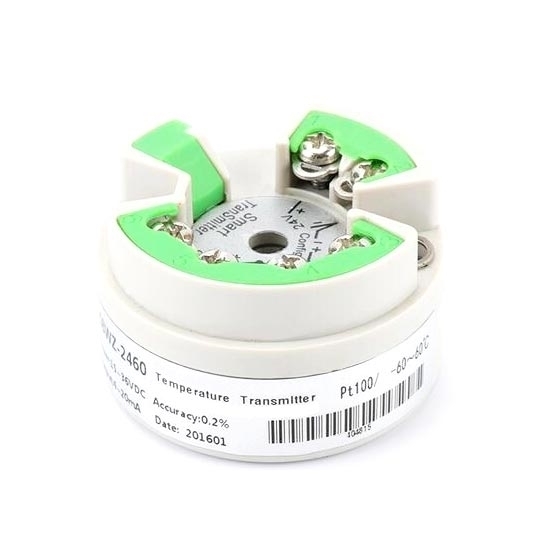
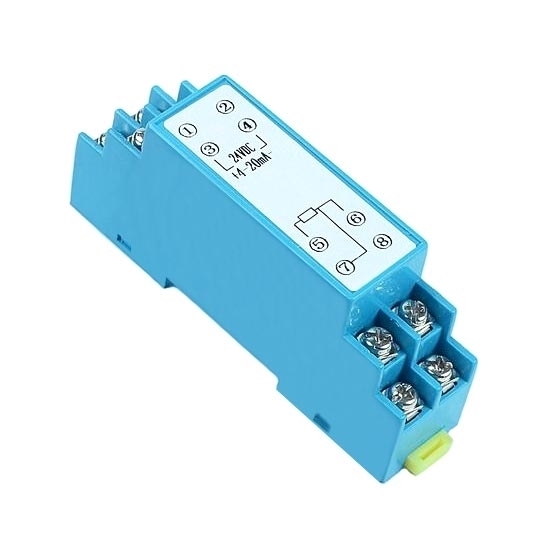
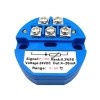
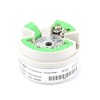
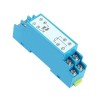
Temperature Transmitter, PT100/E/K/S/B/T/J/N/R Type
from
$75.19
Ex Tax: $75.19
- Stock: In Stock
- Model: RDDLZ-TEMPT-SBW
- Weight: 1.00
- SKU: RDDLZ-TEMPT-SBW
Available Options
Create unlimited custom product blocks and display them in accordions or tabs or open blocks. Each block can be assigned to all products at once or specific products according to advanced criteria.
Create unlimited custom product blocks and display them in accordions or tabs or open blocks. Each block can be assigned to all products at once or specific products according to advanced criteria.
Temperature transmitter supports optional PT100, PT1000, E/K/S/B/T/J/N/R type thermocouple input signal.
Specification:
| Model | RDDLZ-TEMPT-SBW |
| Accuracy | ≤0.2%FS |
| Power supply | DC 12-35V |
| Input signal * | RTD (PT100, PT1000), thermocouple (E/K/S/B/T/J/N/R) |
| Output signal | 4-20mA |
| Transmission mode | 2-wire |
| Load resistance | 0~600Ω (DC 24V), rated load 250Ω |
| Temperature influence | ≤0.05/1℃ |
| Mechanical vibration | f≤55Hz, amplitude<0.15mm |
| Working environment | Temperature: -25~+80℃, humidity: 5%~95%RH |
Measuring range chart:
| Type of sensor | Measuring range | Minimum measuring range (difference value of upper and lower limits) |
| E | 0~800℃ | 300℃ |
| K | 0~1300℃ | 400℃ |
| S | 0~1600℃ | 600℃ |
| B | 0~1800℃ | 800℃ |
| T | 0~400℃ | 200℃ |
| J | 0~1200℃ | 300℃ |
| N | 0~1200℃ | 400℃ |
| PT100 | -200~+600℃ | 50℃ |
| PT1000 | -200~+600℃ | 50℃ |
Dimensional drawing:
Wiring diagram:
Tips: Temperature transmitter calibration
- Calibrate the temperature transmitter on site, particularly the transmitter with thermocouple input. If there's automatic temperature compensation for reference end, the compensation lead method shall be adopted for connection calibration. When calibrating, the output impedance of the calibrator shall be smaller enough than the input impedance of the calibrated thermocouple temperature transmitter, otherwise a large measurement error may occur.
- Adjustment before calibration. Use the method of changing input temperature signal to adjust the corresponding output lower limit value and output upper limit value, make it consistent with the lower and upper limits value of the standard. Do not adjust zero and range during the measurement process.
- Calibration process. Selection of the calibration points is evenly distributed by measuring range. Generally no less than 5 points shall be selected, including the upper limit, the lower limit and the points near the 50% range. Read and record in turn from the lower limit to the upper limit and then reverse to the lower limit, measure for three cycles. Calculate the difference between the average value and the standard output value of the calibrated points within the 3 cycles through the comparison method, thus getting the error of all the calibrated points.
Builder in Product TAB
NEW! Since Journal 3.2, the much improved T.A.B (Tabs Accordion Blocks) system supports the page builder inside the tab content. Unlimited Blocks, Tabs or Accordions with any HTML content or the builder interface (supporting custom rows/columns/modules) can be assigned to any individual product or to certain groups of products, like entire categories, brands, products with specific options, attributes, price range, etc.
You can indicate any criteria via the advanced product assignment mechanism and only those products matching your criteria will display the modules.
Also, any module can be selectively activated per device (desktop/tablet/phone), customer login status and other criteria. Imagine the possibilities.
